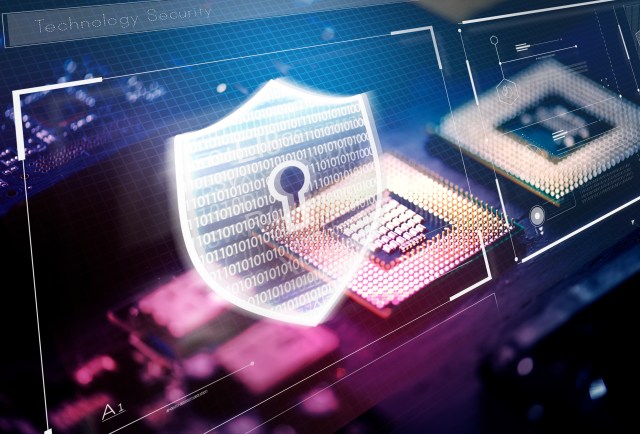Identity fraud has become an increasingly prevalent threat in today’s digital world, where Americans engage in online transactions and activities daily. Over the last decade, identity fraud in the U.S. has nearly tripled, with over 1 million reports of identity theft made to the Federal Trade Commission in 2023 alone.
Identity fraud, or identity theft, occurs when someone uses your personal information without permission for fraudulent purposes. The consequences can be devastating, affecting your finances, credit score, and mental and emotional health. Now more than ever, it’s essential to understand the types of identity fraud and the strategies you can employ to protect yourself and safeguard your personal information from theft.
Understanding Identity Fraud
Identity fraud can have serious consequences. Criminals can rack up significant financial losses in your name, damage your credit score, and make it difficult to obtain loans or credit cards. Additionally, you may face legal troubles if your identity is used for criminal activities.
Recognizing the methods criminals use to access your personal information is key to protecting yourself. Fraudsters can use several techniques, including:
Physical Theft: Criminals steal personal items like your wallet or purse, gaining direct access to sensitive information.
Phishing: Fraudsters send fake emails or texts or create fake websites to trick you into revealing sensitive data, such as Social Security numbers, credit card details, or login credentials.
Data Breaches: Cybercriminals exploit security gaps to access databases containing personal and financial information.
Social Engineering: Manipulating you through deceit or coercion, criminals can impersonate trusted organizations, using emotional triggers to trick you into sharing your personal information.
How to Protect Yourself from Identity Fraud
There are several strategies to safeguard your personal information and reduce the risk of identity theft:
- Monitor Your Financial Accounts- Set up account alerts with your financial institutions to notify you of any suspicious activity. Regularly review your financial account statements and credit reports to spot unauthorized transactions. You can request free credit reports once a year from each of the three major credit bureaus at AnnualCreditReport.com. Report any discrepancies immediately.
- Be Careful with Your Personal Information- Protect your Social Security number and avoid carrying your Social Security card with you. Share sensitive information, such as credit card details or passwords, only with trusted entities. Always ensure you’re on a secure website before submitting any personal information (look for the lock symbol next to the URL in the address bar).
- Phishing Scams- Be cautious of phishing scams, which typically will come through email or text, and never share personal details without verifying the source. Never follow email links unless you check the sender address to ensure that it’s coming from the correct domain name. Scammers will often send emails from addresses that appear similar to the real company. If you receive an email or text asking for personal information, contact the company directly through search and then to their business domain or call their phone number to confirm the request.
- Mail- Collect your mail daily to prevent criminals from stealing your personal information. Consider using a P.O. Box or a mail hold service if you’re unable to collect your mail regularly.
- Social Media- Be mindful of what you post on social media, as photos and videos can give sensitive information away that people will sometimes use for passwords and authentications (like pets names, birthday and age, a shirt with a local business or school name, signs in the background, etc). Be sure to adjust your privacy settings to control who can see your personal information on your social media accounts.
- Strengthen Your Account Security- Use strong, unique passwords for all your online accounts. Avoid using personal information that can be easily guessed. Change your passwords regularly, and enable two-factor authentication (2FA) whenever possible for an extra layer of protection. There are password manager services, such as 1Password and Keeper, that can store your passwords to ensure you are easily able to remember unique passwords that you create.
- Secure Your Devices and Network- Keep your devices’ operating systems, apps, and software up to date to ensure the latest security patches are applied. Install antivirus software and ensure that your network is password-protected, especially for your home Wi-Fi. Avoid using public Wi-Fi networks for sensitive activities such as online banking. A Virtual Private Network (VPN) can provide additional security when using public networks.
Additional Steps to Prevent Identity Fraud
Shredding documents containing personal information before discarding them is a simple yet effective way to protect yourself. Consider signing up for USPS Informed Delivery to monitor the mail arriving at your home.
You may also want to subscribe to identity monitoring or theft protection services, which offer tools like credit monitoring, activity alerts, and assistance if you become a victim of fraud. Many credit card companies offer these services as part of their benefits.
If you’re targeted by identity theft, immediately place fraud alerts on your credit accounts and file reports with the Federal Trade Commission (FTC) and your local police department. The FTC’s IdentityTheft.gov website provides resources to help you recover your identity.
Stay Vigilant
Staying proactive and aware of potential risks is crucial in minimizing the financial and personal impact of identity theft. Always protect your personal information and act quickly if you suspect you’ve been targeted.
